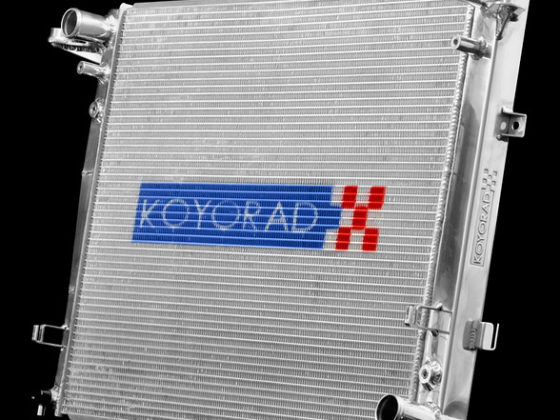,
 |
 |
 |
| The ducts that we have been showing you end up in the car’s tail above the rear diffuser where their outflow helps activate the diffuser, making it more effective. You can see the heat exchangers in the duct and the plumbing leading to it. The exit is in the bumper cover right below the BMW driving school sticker. Hella cool! |
 |
| Suspension position transducer provides feedback to the engineers. |
 |
| Fitting for the air jack system. |
The suspension uses Ohlins thru-shaft dampers. Thru-shaft dampers are a new innovation in shock absorber technology that is worth some extra explaining as this technology may soon trickle down to stuff that we can afford. In a thru-shaft shock, the shock shaft goes all the way through the damper body protruding from the bottom of the damper. This makes it so shaft fluid displacement isn’t an issue. In a conventional shock, there must be space inside the shock filled with compressible gas to make up for the displacement of the shock shaft as the suspension is stroked. Without that gas volume the shock would simply lock up because the fluid is incompressible. A large gas volume adds some hysteresis to the shock’s damping and causes some lag between movement and application of damping force.
 |
 |
| Every bit of air is managed, the fender vents relieve pressure in the wheel wells reducing drag. The strakes divert air enough to give some downforce. They also create side vortices which reduces the amount of air curling under the car at speed. |
 |
| Side vents feed the rear brake ducts and the heat exchangers for the AC system. |
With a through shaft the gas volume can be quite small and the damping remains constant through the stroke. There is no change in gas reaction force no matter where in the travel the shock is since the shaft is now not displacing and compressing the gas inside the damper body. The gas chamber in the damper only provides pressurization to prevent cavitation caused by high speed oil flow in the valves from causing variation in damping force and is very small in volume. The other advantage of a through shaft design is that there is a widely spaced lower bearing point on the bottom of the shock body to support the shaft with maximum overlap. This makes the damper have less bind and smoother action under side load and longer life.
 |
| Rear fender vents also have downforce generating strakes. |
The Ohlins shocks are 4-way adjustable with parametric adjustments for both high and low speed compression damping easily done with a turn of a screw. The Rahal-Letterman team can also do shock valving changes and their rig has a shock dyno on board.
 |
| We wondered why the cars had so many elaborately machined thick and beefy undertrays. The reason is that the undertray also serves as ballast and the different trays are for the different awards weight that the cars may have to carry. The undertray is the perfect point to place ballast because it is low on the bottom of the car where it will lower the center of gravity. |
The suspension also features antisway bars with blade type adjusters, ALMS rules do not allow driver adjustable bars. The Power 400 control system monitors the suspension via suspension position transducers and wheel speed sensors which are tracked via the team’s one way telemetry system.
 |
 |
| The rear wing is the tunable element of the cars aero package. The sturdy mounts connect directly to the chassis. The maximum wing width is 90% of the bodies widest part. |



